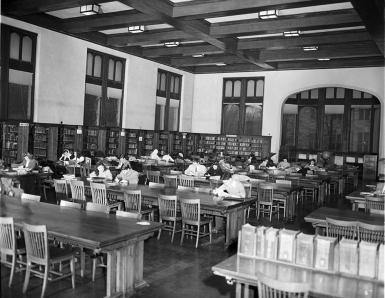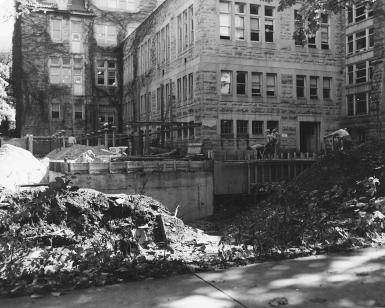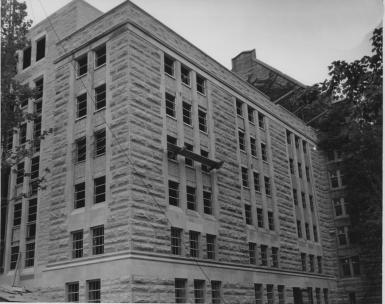Library Building additions mirror growing student body

The rapid expansion of the library holdings in Franklin Hall during its 62 years as the Library Building provides an interesting parallel to the growth of the university during the first two-thirds of the 20th century.
When the library first moved from Maxwell Hall during the winter break of 1907-08, it comprised 64,000 volumes to serve the campus’ 1,059 students. By 1915, the collection had grown to 100,000. It reached 1 million volumes in 1949 and 4 million in 1964. That year, administrators asked the Indiana Legislature for $11.9 million to fund the construction of a new library.
The statistics reflect the leap in post-World War II campus enrollment, fueled initially by returning GIs. The student population grew from about 5,400 in 1939 to almost 11,500 in 1949. In fall 1964, almost 21,000 students registered at IU Bloomington.
And as the student enrollment and book holdings grew, so did Franklin Hall.

New stacks on the north end of the building — slated to be faculty offices in The Media School — were finished in 1926. A new east wing, with a second reading room, was added a year later. The departments of fine arts and mathematics moved in upstairs.
By the mid-1950s, the stacks were too small, and another addition was built. By 1969, the library had taken over the entire building, except for the second floor of the west wing, which was occupied by the university administration. It was time to move on, to a brand new building at 10th and Jordan known now as the Herman B Wells Library.
The result of the ad hoc additions to the old library is a rabbit warren of a building. In some cases, it’s impossible today to travel from one part of Franklin Hall to another without going outside.

In a school dedicated to communication, dead-end hallways just won’t do. So starting in October, walls will come down and ceilings will be removed or raised.
Franklin will be on its way to becoming an open, integrated, communication-friendly building, in keeping with its new purpose as a media school.

